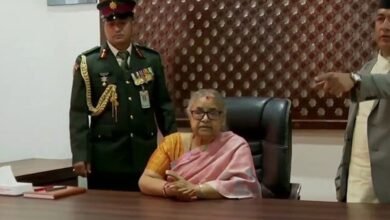Ayodhya stand, Lipulekh row cost me power: Oli’s anti-India rant after ouster

Ayodhya stand, Lipulekh row cost me power: Oli’s anti-India rant after ouster
Deposed Nepal Prime Minister KP Sharma Oli has launched a sharp attack on India, claiming that he was forced out of power because he dared to challenge New Delhi on sensitive issues. Oli, who’s currently at the Shivpuri barracks of the Nepal Army, went on an anti-India rant in a letter sent to his party’s General Secretary.
Oli said he would have remained in office had he not raised questions over Lipulekh, a disputed territory claimed by both Nepal and India. He also alleged that his stand on Ayodhya and Lord Ram had cost him politically, declaring, “I lost power because I opposed the birth of Ram in Ayodhya.”
The remarks come a day after Oli stepped down as prime minister following massive protests by angry young Nepalis, who defied curfew orders and clashed with security forces in Kathmandu and other cities.
The demonstrations, triggered by a social media ban, quickly spiralled into the biggest unrest Nepal has seen in decades. The demonstrators protested against corruption and nepotism in the ruling government. A day after his ouster, Oli, however, claimed that his remark on Ayodhya and the Lipulekh row were the reason why he lost power.
OLI’S AYODHYA REMARKS
In July 2020, then Nepal Prime Minister KP Sharma Oli triggered a controversy by claiming that Lord Ram was not Indian but Nepali. Oli said,”Lord Ram’s kingdom Ayodhya is located west of Birgunj in Nepal and India has created a disputed Ayodhya.”
He went on to argue that the real Ayodhya lay in Thori village, near Birgunj in Nepal, and not in Uttar Pradesh. Alleging that India had “encroached” Nepal’s cultural heritage, Oli added, “We are under the misconception that Sita married Ram of India. But Ram was not Indian but Nepali.”
Oli also questioned how Ram could have come all the way from Uttar Pradesh to marry Sita in Janakpur, saying long-distance marriages were not common in ancient times. “At that time there were no phones so how did they communicate? During those times, marriages were arranged in nearby kingdoms only. No one used to travel so far to marry,” he said.
His remarks sparked a political storm, with many in India dismissing the claims as baseless.
WHAT WAS THE LIPULEKH ROW
The Lipulekh Pass dispute is one of the most contentious border issues between India and Nepal. It revolves around the Kalapani region, where the two countries disagree on the source of the Kali River, which was defined as the boundary under the 1816 Treaty of Sugauli.
Nepal maintains that the river originates at Limpiyadhura, northwest of Lipulekh, which would place Kalapani and Lipulekh within its territory. India, however, says the river begins near Kalapani village, making the disputed area part of Uttarakhand.
During Oli’s tenure, his government issued a firm statement, saying, “The government of Nepal is clear on the fact that Limpiyadhura, Lipulekh and Kalapani east of the Mahakali River are integral parts of Nepal.” Kathmandu also urged India to halt activities such as road construction and border trade in the area, and even informed China that the territory belonged to Nepal.
India rejected Nepal’s claims outright. The Ministry of External Affairs said, “As regards territorial claims, our position remains that such claims are neither justified nor based on historical facts and evidence. Any unilateral artificial enlargement of territorial claims is untenable.”
India also pointed out that border trade with China through Lipulekh has been in place since 1954, interrupted only in recent years due to the pandemic and other factors.
– Ends
Source link



